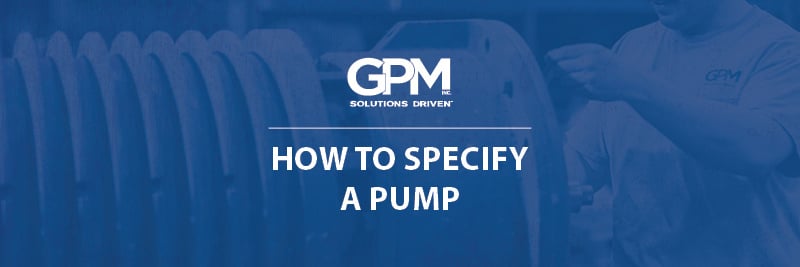By GPM, Inc. on Sep 20, 2024 12:10:23 PM
Industrial applications are a series of complex systems working in tandem to keep civilization running, and they often include moving liquid from one place to another. Whether treating wastewater, refining oil, mining critical minerals or making steel, ensuring process water is where it needs to be is essential to keeping these industrial operations running. The right pump makes it possible.
What Could Go Wrong?
Unfortunately, so much can go wrong. Specifying the wrong pump can start a catastrophic snowball of errors that lead to failure and downtime. Diagnosing the problem and purchasing and installing a correctly sized replacement is costly, especially if the pump has already failed and an operation has been shut down.
Instead, specifying the correct pump from the start of a project is a critical step toward ensuring operations run smoothly from initial startup to closure while also:
- Prioritizing worker safety
- Allowing for routine maintenance
- Minimizing unexpected downtime
- Saving maintenance and repair costs
- Delivering a higher ROI
The good news is that proactive planning on the front end of a project can make a huge difference, and for projects underway, it’s never too late to make strategic equipment changes that will transform operations.
Common Pump Specification Mistakes—and How to Avoid Them
After over 45 years in the pump business, GPM knows how to help teams get things right because we can catch common pump specification mistakes before they lead to failure. Our team helps our customers recognize these mistakes early so we can correct them quickly (or avoid them altogether).
- Incorrect Sizing
If a pump doesn’t meet its classified best efficiency point (BEP), typically between 70-115%, it’s likely incorrectly sized. An oversized pump can be just as big a problem as an undersized one, and it happens more often than you’d think. When multiple project stakeholders add a little to the safety margin, the pump that ends up being ordered has so much buffer that it can fail due to cavitation and extreme wear on the pump components, affecting the overall efficiency and performance. In submersible systems, we also recommend measuring the piping system, discharge points and sump size. If a pump can’t submerge fully, its motor can overheat, and motor windings can break down.
A trusted pump partner can prevent this mistake during the pump selection process by considering the overall system profile and factoring in the required flow rate, pressure head and safety margins. - Not Planning for the Future
When pumps are specified only for a system’s current parameters, they’re ill-prepared for inevitable system changes. As the production process evolves, the original pump may no longer be right. Of course, there’s no crystal ball to predict how a project will progress, but if you know or suspect the system will evolve, plan your pump purchase accordingly. - Incorrect installation
We’ve seen pumps fail due to incorrect wiring (which causes impellers to rotate in the wrong direction), misaligned couplings, ineffective suction-side piping and damaged cables. It’s best to triple-check pump wiring before installation to avoid overheating, efficiency loss, excess vibration, water intrusion and more. - Overlooking System Challenges
A pump problem doesn’t always mean a problem with the pump. Something could be wrong with a component in the greater pump system. Check the downstream piping and valves for blockages of debris, scale, sediment or other foreign objects. Consider installing a continuous monitoring system to track vital parameters such as flow rates, pressure and temperature. If you don’t know exactly what to look for, consider engaging an experienced field service team to conduct a thorough visual inspection, including checking valves and looking for buildup inside pipes to determine if anything is amiss.
Your Full-Service Pump Partner
GPM knows pumps, and we put that knowledge to work for our customers. We’re the OEM of the GPM-Eliminator™—the world’s toughest slurry pump—and we have a team of talented engineers skilled in custom pump solutions. We help customers avoid common pump-specification mistakes that lead to unplanned maintenance costs and unexpected downtime. We serve as guides, helping with designing, specification, building, installing, testing, and commissioning the right pump for the job. Tag us in. We’re ready to help.



